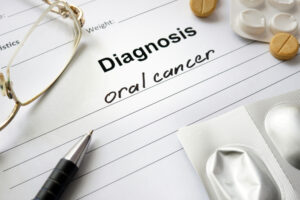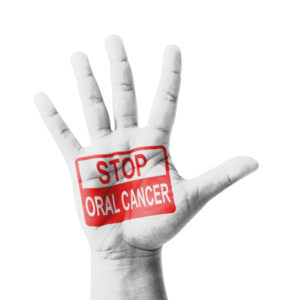Early detection of oral cancer significantly improves treatment outcomes and survival rates. Regular screenings, combined with self-awareness, play a crucial role in identifying abnormalities before they develop into more serious conditions. This article discusses the importance of screening, what to expect during a dental exam, self-examination techniques, and when to seek professional help.
Why Early Detection Matters
Oral cancer, when diagnosed early, has a five-year survival rate of 80-90%. However, if detected late, this rate drops significantly. Early detection allows for less invasive treatments, higher success rates, and reduced healthcare costs. According to the Oral Cancer Foundation, about 54,000 people in the U.S. are diagnosed annually, but many cases are caught too late due to a lack of regular screenings.
What is Oral Cancer Screening?
Oral cancer screening involves examining the mouth, throat, and related areas to identify any signs of cancer or precancerous conditions. Dentists and healthcare professionals are trained to spot abnormalities that may go unnoticed by patients.
Professional Screening During Dental Visits
Regular dental visits are an excellent opportunity for professional oral cancer screenings. Dentists are often the first to notice unusual changes in the mouth, lips, or throat.
- Visual Examination
- Dentists inspect the lips, gums, tongue, cheeks, and the roof and floor of the mouth for sores, discoloration, or lumps.
- The throat and neck are checked for swelling or unusual masses.
- Palpation
- Dentists gently palpate the neck, jaw, and mouth to detect any lumps or thickened areas.
- Specialised Tools
- Some dentists use advanced tools, such as fluorescence lights, to highlight abnormal tissues that might not be visible to the naked eye.
Tip: Schedule a dental check-up every six months, ensuring oral cancer screening is part of the exam.
Self-Examination Techniques
Performing regular self-examinations helps you stay alert to potential warning signs between dental visits. Here’s how to do it:
Step-by-Step Guide to Self-Exams
- Check Your Lips and Gums
- Use a mirror to inspect your lips for sores or lumps.
- Look for discoloration or swelling on your gums.
- Examine Your Tongue
- Stick out your tongue and look for unusual patches, bumps, or sores.
- Use a clean finger to feel for lumps on the sides or underside of the tongue.
- Inspect the Roof and Floor of Your Mouth
- Open your mouth wide and check the roof for unusual texture changes.
- Tilt your head back to examine the floor of your mouth for swelling or discoloration.
- Feel Your Neck and Jaw
- Gently press around your neck and jawline to check for lumps or tender areas.
- Monitor for Persistent Symptoms
- Keep track of symptoms like difficulty swallowing, persistent sore throat, or changes in your voice.
When to Be Concerned
If you notice any of the following, consult a healthcare professional immediately:
- A sore that doesn’t heal within two weeks.
- Persistent pain or numbness in the mouth or lips.
- Lumps, thickening, or unexplained bleeding.
When to Seek Professional Help
Knowing when to consult a dentist or doctor is key to effective early detection. Certain signs should never be ignored:
- Persistent Sores: Any ulcer or sore that lasts longer than two weeks requires evaluation.
- Changes in Voice: Hoarseness or voice changes without an apparent cause could indicate throat involvement.
- Difficulty Swallowing: Ongoing discomfort when swallowing may signal a deeper issue.
- Unexplained Weight Loss: Rapid, unexplained weight loss can be a symptom of advanced cancer.
Diagnostic Tools for Early Detection
If abnormalities are detected, your dentist may recommend further tests to confirm the diagnosis:
Biopsy
A biopsy involves removing a small tissue sample from the affected area for laboratory analysis. It is the most definitive way to diagnose oral cancer.
Imaging Tests
Advanced imaging techniques help determine the size and extent of the cancer:
- MRI: Provides detailed images of soft tissues.
- CT Scans: Helps detect cancer spread to other areas.
- PET Scans: Identifies cancer activity in the body.
Molecular Testing
In some cases, molecular testing is used to identify genetic markers associated with specific cancers. This helps guide targeted therapies for effective treatment.
Benefits of Regular Screenings
Screening not only helps detect cancer early but also raises awareness of overall oral health. Regular exams can:
- Identify precancerous conditions like leukoplakia or erythroplakia.
- Detect non-cancerous conditions that may still require treatment.
- Encourage healthier lifestyle choices through education.
The Role of Dentists in Screening
Dentists play a pivotal role in early detection and prevention. Regular visits ensure that abnormalities are identified promptly, even if no symptoms are present.
- Collaboration with Specialists: Dentists often work closely with oncologists and dental surgeons to develop comprehensive treatment plans.
- Personalized Care: Dentists provide tailored advice and monitoring based on individual risk factors, such as tobacco use or family history.
Conclusion
Early detection of oral cancer is critical for successful treatment and improved survival rates. Regular screenings by a dentist, combined with self-examinations, help catch abnormalities early. Be proactive by scheduling dental visits every six months and monitoring your oral health for signs of trouble.


